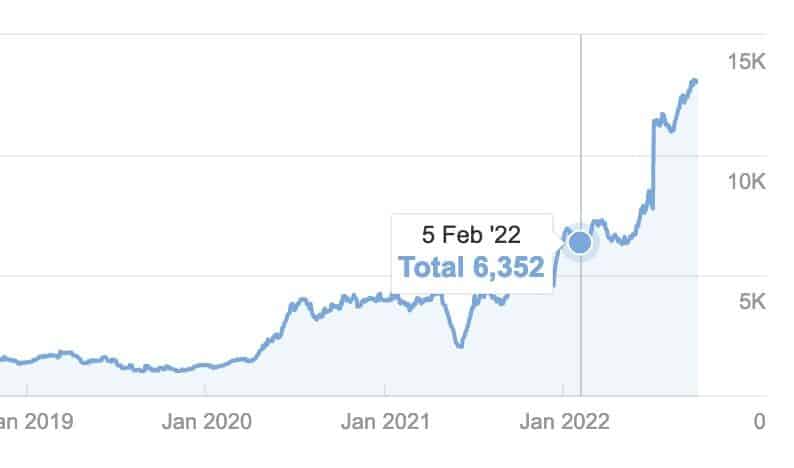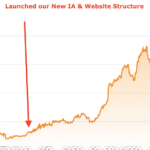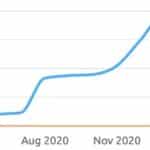There are three types of SEO campaigns that I have encountered often in my fifteen-year SEO career and here is how I approach the initial 3-6 month period for each new campaign (generally):
Note: Tasks like keyword research and GA/GSC reviews are obvious, so let’s assume you know that because that is quite unique to all SEO campaigns. I am clearly trying to explain some differences between various scenarios.

1) “The technological startup” – the site that looks amazing but literally has one link from a friend’s website pushing it with some basic PR. Being less than 3 months old, the website is dumped into Google’s sandbox but this is a time when I focus on building out the Information Architecture and in short, launching PR campaigns about the common pain points that this particular start-up is attempting to solve.
The startup/app could be innovative around saving time, unknown functionality in the marketplace, or simply better at executing the fundamentals. What matters is that this new app/start-up is solution orientated and we can begin to target journalists who discuss technology (or industry) and let them know about it.
Once we have launched an email campaign reaching out to journalists with how this app will improve the daily lives of its users we move on to expanding the current website’s information architecture and URL structure.
When we worked with a startup within the financial services industry, we spent a huge amount of time building the entire IA and always searched for ways to introduce new content assets via dynamically generated content. Since this client works with stocks, we knew that their users would be searching for their “IAG shares” online and we wanted to make sure that every ASX-listed company had its own dedicated and dynamically changing web page on their website. We also expanded into commodities, economics, cryptocurrencies, global indexes and more.
We also built new long-tail content on the blog targeting common FAQs and the sort of thing that new and existing investors were actively seeking on Google. These were not covered in the initial site build, therefore we knew doubling down on a new IA would immediately improve their inbound traffic and would be essential for growing their search engine visibility over the long haul.
2) “The construction/real estate website” – these types of campaigns are very difficult. They have been around for ages, the design clearly displays that the website was made in 2001 and no one has posted content on the blog since 2007. However, they have age (domain trust/authority metrics) and over the years have obtained and built some solid links to highly trusted resources. For example, they have a few links from local government councils, business chambers, and industry giants. Therefore, the first 3-6 months are focusing on refreshing the design for mobile/UX, and CTAs and expanding the blog to target long tail keywords that will be easier to rank and get the website moving its legs again.
The focus is blog content and refreshing the design with additional service pages. If they only have five services, can we expand it to ten and so forth? Building specific service pages is key.
With new content being added and double downed in the initial three to six months, ensuring that the website will convert and the design optimised for mobile is vital. What would be the point to grasp the low-hanging fruit but cannot go through with the sale on the business end?
3) “The amazon eCommerce store” – Probably my favourite. Super large eCommerce stores are technically challenging and demanding. This is where I dedicate time to super large website crawls extracting the last 12 months of data from GA and GSC and reviewing essentially every URL’s response codes, canonicals, duplicate titles/description, schema and of course mobile first-page speed scores. You can analyse an endless amount of data and you will over the duration of the campaign but the initial 3-6 months should be focused on the high-priority items.
These normally are poorly written titles and descriptions for your top 50-100 performing pages, some of which are dead and broken for no apparent reason or have internal linking issues like linking to broken pages or product URLs. Nothing saps link juice like linking to a broken page.
What I find is that there are two major issues to solve in the initial three to six months.
External broken links and 404 product pages that the company’s store admins have taken down and when you ask why there is a confused frown on the other end of the zoom call.
Some URLs are 301 redirected but most are broken and no longer found. The problem is, many of these URLs have external links that have ended up in the bin so my solution is to restore pages where possible with the same content and URL. I rather this product, if possible, remain on the website with an enquire now button (instead of add-to-cart) and display related products than leave it to 404.
As a last resort, 301 redirect this URL to a relevant and permanent location. The goal here is to preserve existing page authority whenever possible and nothing preserves page authority more than to restore an URL/Web back to its exact former glory.
Although the above also deals with fixing up your external links, there are most likely broken external links to your category (or in Shopify’s vernacular “collection”) pages which can be restored, if possible, with new and updated products or 301 redirected to another location as the last option. I am known among my clients as the “restoration rather than the redirection first SEO guy”.
Not to belabour the point, large technical SEO site crawls are exceptionally important for super large eCommerce stores and these need to be done one to two times per month in my totally unbiased opinion. You will no doubt find issues with internal 404 errors, canonical issues and duplicate content issues, so much so that there may be awkward conversions with your client’s development team (or in my case, with Shopify directly).
You will find that some of your best pages lack the SEO fundamentals and I have gained so many wins by expanding the titles and writing proper meta descriptions purely for click-through rates. Such an underestimated strategy in 2022 as they are not often something many SEOs focus on with all of their heart and strength, believing because they have no SEO benefit (directly), they are not worth the effort. But you’re wrong.
Before I consider off-page SEO, I prefer to ensure our SEO foundation is structurally sound.
In Summary:
The first three to six months is a vital period for any SEO. It is a great opportunity to build trust with your new client and what better way to build trust than to be proactive in solving the initial issues and the correct tasks that will give you the best possible chance to demonstrate expertise and achieve some quick wins on the board?
I think this is a time to narrow down the top 3 tasks that you have identified as the most important during your first website crawl or visual review of the website. As time goes on, you can expand and explore new issues.
The foundation of any successful SEO campaign is to identify the critical tasks in your work flow and double down on those in the initial three-six month period
~Andrew P Glyntzos
All successful long-term campaigns have focused on PR, content and links. I don’t believe there are any exceptions to this within the SEO community.
Here is the full video edited:
Good luck and let me know if you have any questions below.




